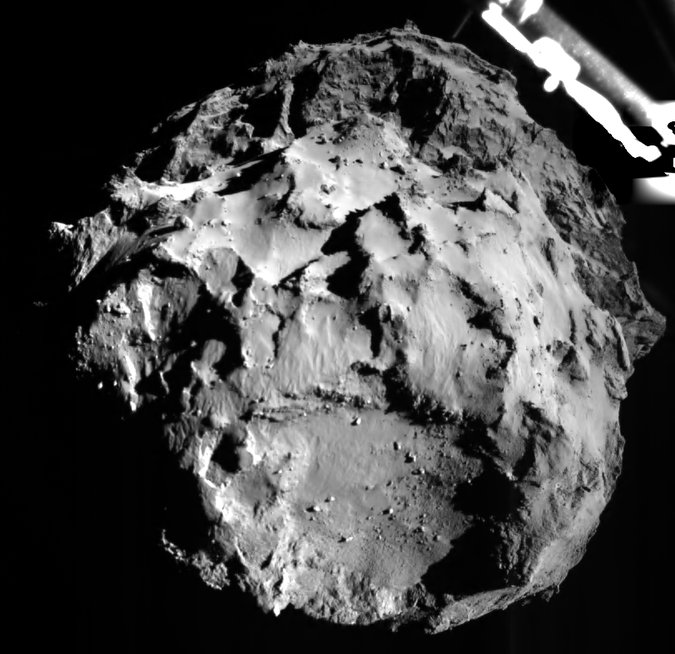

Not all that long ago, the European Space Agency’s (ESA’s) Rosetta spacecraft arrived at its destination, Comet 67P/Churyumov-Gerasimenko. The journey to comet 67P took nearly a decade and required the vehicle to come to life after a record-setting 957 day hibernation period.
Now the Philae has landed.
“We’re there and Philae is talking to us,” said Stephan Ulamec, the manager for the lander. “We are on the comet.”
The lander, Philae, has 10 instruments, which it will use to collect data over the next few moths. It has slated 64 hours of scientific operations. After this, its batteries will drain. Solar panels will then recharge the batteries, allowing intermittent operations which will amount to about one hour every two days.
The 1.7 billion dollar (1.3 billion euro) project was at first designed to land on Comet 46P/Wirtanen, but as the mission was delayed, the Comet 67P/Churyumov-Gerasimenko became the new choice. Still, the mission was not an easy success. Since May 2014, the Rosetta’s speed and trajectory were gradually adjusted through a series of complex maneuvers. If one of those calculations had been wrong, Rosetta would have simply flown past its destination.
“Today’s achievement is a result of a huge international endeavour spanning several decades,” Alvaro Giménez, ESA’s Director of Science and Robotic Exploration, said when the comet first reached its destination. Now, it had made another great leap by actually landing on the surface.
The lander touched down on Comet 67P/Churyumov-Gerasimenko shortly after 1600 GMT, seven hours after separating from Rosetta, its mothership, and cheers erupted from scientists.

Although it came with a hefty price tag, this mission serves as a notable first step towards touching (and understanding) the small, frozen rocks in our solar system. Comets are generally held as the “primitive building blocks of the solar system,” as a result, they contain clues to the origin of our cosmic neighborhood.
For example, by analyzing samples collected by Philae, the ESA hopes to help determine whether comets provided Earth with water.